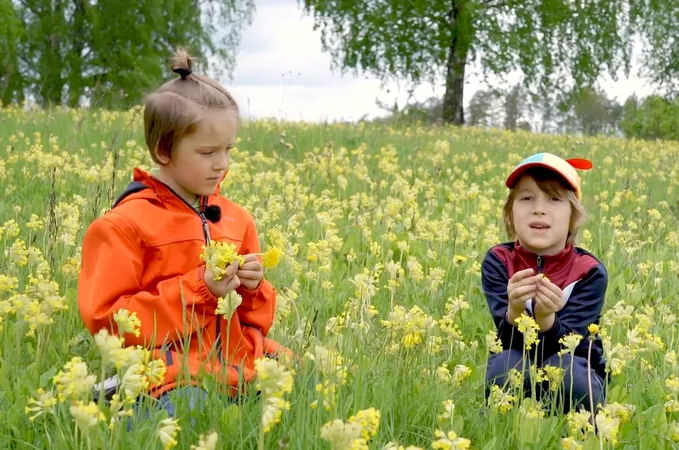
Thousands Unite to Uncover Alarming Changes in Floral Traits of Insect-Pollinated Plants!
2025-01-23
Author: John Tan
Groundbreaking Citizen Science Initiative
In a groundbreaking study published in the Journal of Ecology, thousands of citizen scientists from 32 countries joined forces to investigate the impacts of climate change and land use on insect-pollinated plants, particularly focusing on the humble cowslip (Primula veris). Their findings raise critical alarms about the future of these vital ecosystems.
Cowslip: A Key Model for Insect-Pollination
The cowslip serves as a key model for understanding the complex world of insect-pollinated plants. Fascinatingly, this flower comes in two distinct types: long-styled (L-morph) and short-styled (S-morph). The L-morph's design makes self-pollination nearly impossible, while the S-morph's structure encourages it. This diversity is crucial to avoiding self-pollination and ensuring that insects facilitate cross-pollination.
Alarming Trends in Flower Types
Shocking results from the study indicate a troubling trend: many observed cowslip populations across Europe exhibited a striking imbalance in flower types, with S-morphs outnumbering L-morphs by 9%. Smaller populations, in particular, seemed to suffer more from this imbalance, raising serious concerns for biodiversity.
Correlation with Climate Factors
Delving deeper, researchers discovered a correlation between the heightened S-morph prevalence and factors such as increased summer precipitation and more intensive land use. This could have dire implications as past studies suggest that such imbalances in flower morphology may foreshadow species extinction.
Expert Insights
According to Tsipe Aavik, Associate Professor in Macroecology at the University of Tartu and the study's lead author, these findings were unexpected yet crucial for further research. Past observations in Estonia hinted at potential disruptions in flower morphs, but the new extensive Europe-wide data confirm that this imbalance is not limited to one region.
Further Research Needed
Aavik emphasizes that this widespread disruption could be an evolutionary response to environmental stressors, including habitat loss and climate changes. “The Europe-wide cowslip observation is merely the first step in examining this hypothesis,” she noted.
Citizen Involvement
The citizen science initiative, which flourished between 2021 and 2022, encouraged individuals across Europe to contribute by observing and documenting cowslip populations. Over the course of the project, which began in Estonia in 2019, volunteers investigated more than 900,000 cowslips across over 8,000 locations.
Call to Action
With these alarming findings, scientists call upon citizens and policymakers to pay attention to the health of insect-pollinated plants and consider urgent measures to mitigate the impacts of climate change and land-use changes. As more people engage in citizen science, the hope is to illuminate paths for conservation efforts and ensure the survival of these essential plants.
Stay Tuned!
Stay tuned for updates on this critical research and how you can play a part in protecting our planet's biodiversity!

 Brasil (PT)
Brasil (PT)
 Canada (EN)
Canada (EN)
 Chile (ES)
Chile (ES)
 Česko (CS)
Česko (CS)
 대한민국 (KO)
대한민국 (KO)
 España (ES)
España (ES)
 France (FR)
France (FR)
 Hong Kong (EN)
Hong Kong (EN)
 Italia (IT)
Italia (IT)
 日本 (JA)
日本 (JA)
 Magyarország (HU)
Magyarország (HU)
 Norge (NO)
Norge (NO)
 Polska (PL)
Polska (PL)
 Schweiz (DE)
Schweiz (DE)
 Singapore (EN)
Singapore (EN)
 Sverige (SV)
Sverige (SV)
 Suomi (FI)
Suomi (FI)
 Türkiye (TR)
Türkiye (TR)